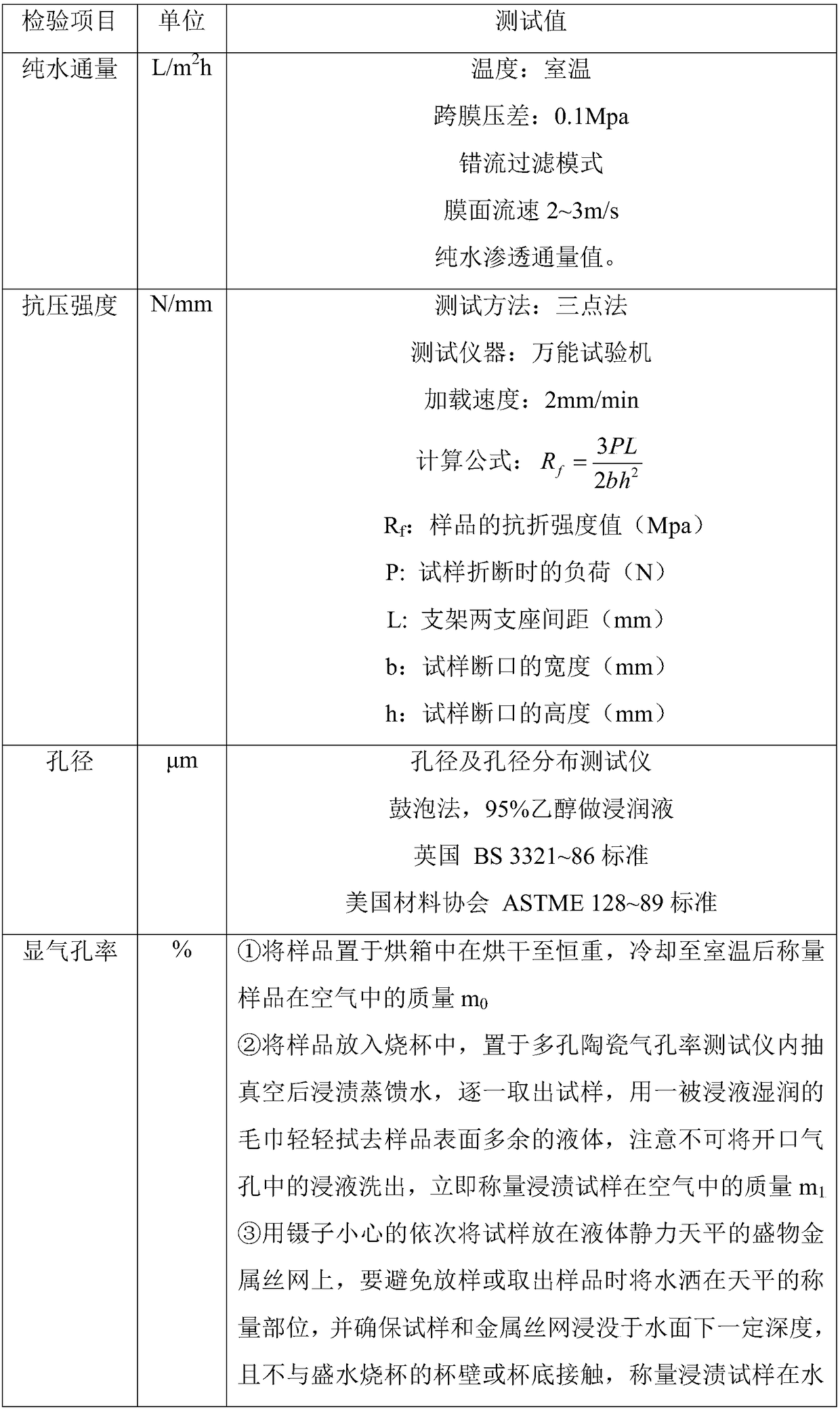Preparation method of porous silicon carbide slab ceramic membrane
A porous silicon carbide and ceramic membrane technology, which is applied in the field of inorganic porous materials and inorganic flat membrane separation materials, can solve the problems of expensive sintering furnace, high sintering temperature, and complicated sintering process
- Summary
- Abstract
- Description
- Claims
- Application Information
AI Technical Summary
Problems solved by technology
Method used
Image
Examples
Embodiment 1
[0048] The mass percentage of 18μm silicon carbide particles, hot melt additives, methylcellulose, starch, triglycerin, oleic acid, ammonium polyacrylate, and cooked tung oil is 80.0:7.0:4.0:2.5:1.5:1.0:1.5:2.5 Blended in a mixed solvent of water and ethanol (V / V=3:1), the solvent accounts for 30wt% of the total, dry-mixed in a powerful blender for 10 minutes, and the solvent is wet-mixed for 120 minutes. The clay sticks are packed and packed in a vacuum bag, aged at 20°C for 24 hours, and then vacuumed again before opening the tube. The extruded mud blank is 110mm wide and 6mm thick, the middle channel is a 3mm×3mm square hole, the distance between the channels is 1mm, the distance between the channels and the flat support surface is 1.5mm, and the cutting length is set during extrusion 516mm porous silicon carbide flat ceramic support mud body, extrusion pressure 10Mpa, extrusion speed 25mm / s. Continuous microwave rapid shaping. After box-type microwave dehydration reaches 9...
Embodiment 2
[0052] The mass percentage of 45μm silicon carbide particles, hot melt additives, methylcellulose, starch, triglycerin, oleic acid, ammonium polyacrylate, and cooked tung oil is 75.0:10.0:4.0:3.0:1.5:1.0:1.5:4.0 Blended in a mixed solvent of water and ethanol (V / V=4:1), the mixed solvent accounts for 30wt% of the total, dry blended in a powerful blender for 10 minutes, solvent-added wet blended for 180 minutes, and then mud-blended in vacuum once. Pack the finished mud in a vacuum bag and leave it to rot at 20°C for 24 hours, and then vacuum the mud again before extruding. The extruded mud blank is 110mm wide and 6mm thick. The middle channel is a circular hole with a diameter of 3mm, the distance between the channels is 1mm, the distance between the channels and the support surface is 1.5mm, and the cutting length is set to be 516mm porous silicon carbide during extrusion. Flat ceramic support body mud, extrusion pressure 8Mpa, extrusion speed 20mm / s. The cart speed of the mu...
Embodiment 3
[0056] The mass percentage of 45μm silicon carbide particles, hot melt additives, methylcellulose, starch, triglycerin, oleic acid, ammonium polyacrylate, and cooked tung oil is 75.0:10.0:4.0:3.0:1.5:1.0:1.5:4.0 Blended in a mixed solvent of water and ethanol (V / V=4:1), the mixed solvent accounts for 30wt% of the total, dry blended in a powerful blender for 10 minutes, solvent-added wet blended for 180 minutes, and then mud-blended in vacuum once. Pack the finished mud in a vacuum bag and leave it to rot at 20°C for 24 hours, and then vacuum the mud again before extruding. The extruded mud blank is 110mm wide and 6mm thick. The middle channel is a circular hole with a diameter of 3mm, the distance between the channels is 1mm, the distance between the channels and the support surface is 1.5mm, and the cutting length is set to be 516mm porous silicon carbide during extrusion. Flat ceramic support body mud, extrusion pressure 8Mpa, extrusion speed 20mm / s. The cart speed of the mu...
PUM
 Login to View More
Login to View More Abstract
Description
Claims
Application Information
 Login to View More
Login to View More - R&D
- Intellectual Property
- Life Sciences
- Materials
- Tech Scout
- Unparalleled Data Quality
- Higher Quality Content
- 60% Fewer Hallucinations
Browse by: Latest US Patents, China's latest patents, Technical Efficacy Thesaurus, Application Domain, Technology Topic, Popular Technical Reports.
© 2025 PatSnap. All rights reserved.Legal|Privacy policy|Modern Slavery Act Transparency Statement|Sitemap|About US| Contact US: help@patsnap.com



